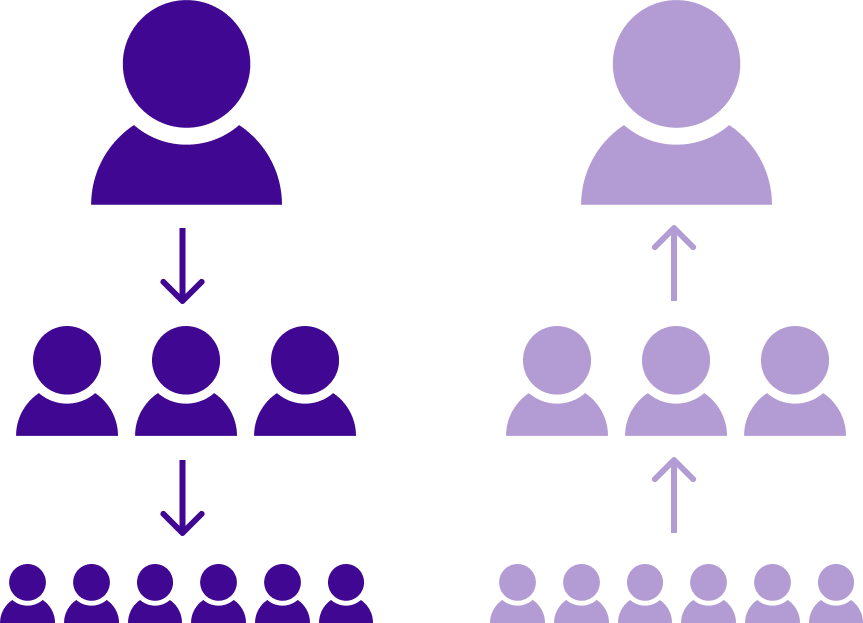- Understand why it’s important to know your audience
- Understand why business writing needs to be clear and focused
- Recognize what makes positive, negative, and persuasive messages work effectively
The Communication Process
The purpose of communication is to have the sender’s idea in mind reach the receiver’s mind with identical understanding. However, as the social communication model showed, there can be many variables that result in misunderstanding.
Audience
Recall that your message may have more than one audience: your primary audience and a secondary audience. In this module, we will focus on the primary, direct audience.
Good communicators are mindful of secondary audiences when they start writing since doing so can help advance organizational goals. The primary audience is the intended receiver of the business communication. This person or group of people can be internal or external to the sender’s organization. The relationship to the organization may impact the formality of the wording and the candor of the message. When you are new to an organization or new to business writing for the organization, be sure to consult with more experienced staff to learn the tone that the organization prefers to use as its voice.
Directions of Communication
Tone varies based on the power relationship of the sender to the receiver. The audience may be in one of three power positions relative to the sender so that the communication is upward, downward, or horizontal.
downward communication
Downward communication refers to the flow of information from higher levels of an organization’s hierarchy to lower levels.
Downward communication flows from the managerial and executive levels to the staff through formal channels such as policy manuals, rules and regulations, and organizational charts.
upward communication
Upward communication is the process of information flow from the lower levels to the upper levels within an organization’s hierarchy.
Upward communication is initiated by staff and directed at executives, managers, and supervisors. It frequently takes the form of a complaint, a request, or providing an update.

horizontal communication
Horizontal communication refers to the exchange of information, ideas, and feedback between individuals or departments at the same level of an organization’s hierarchy.
Horizontal communication occurs when colleagues meet to discuss issues of common interest, resolve problems, and share information. This form of communication helps employees express information and ideas as well as coordinate the organization’s work.

Talking across Different Levels
| Direction and Purpose | Say This | Don’t Say This | Why? |
|---|---|---|---|
| Upward communication: an employee emailing the boss to request a day off | Mr Sanchez, may I have Friday off? | Hey, I’m going to take Friday off. Ok? | Deferential (formal title) and request rather than statement or demand |
| Downward communication: a manager emailing their team to let them know about an upcoming day off | Team, I’m out of the office on Friday. Please hold any issues until Monday. | Team, do you mind if I take Friday off? | As a manager, you are not seeking permission. |
| Horizontal communication: an employee letting coworkers know about an upcoming vacation day | Hi all. I’ll be out on Friday. Please let my customers who call the main office number that I will respond on Monday. | See you next week! | The tone is peer-to-peer compared to the other samples. Be sure to include any information about potential coverage your peers may need to complete while you’re gone. |
Notice in each of the three sample messages that even in their few words, knowing the upward, downward, or horizontal position of the receiver impacted the tone and phrasing of the message.
Communication starts with a sender who encodes a message that is then sent to a receiver who decodes it and may offer feedback. Noise can interfere with the process at any stage of the communication process.
Your primary audience is the audience that your communication is intended for and who are expected to take action or make decisions based on the communication.
The secondary audience includes individuals who are not the main focus of the communication but who may still read, hear, or use the information indirectly or have an interest in its outcomes.